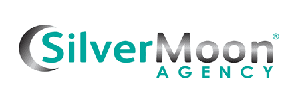In the digital age, where attention spans are fleeting and competition for online visibility is fierce, engaging website copywriting has become a cornerstone of successful online marketing strategies. Whether you’re launching a new website, refreshing an existing one, or re-creating for search engines, compelling copywriting is essential for capturing audience interest, driving conversions, and establishing your brand identity. In this blog, we’ll explore the importance of engaging website copywriting, key principles to consider, and actionable tips for crafting content that resonates with your audience and achieves your business objectives.
Before we get into the meat of this article, there are a couple of questions you must ask yourself:
- Am I good at writing? Do I know how to structure sentences and paragraphs in a matter to draw in my potential customers?
- Do I have the time to take away from the “business of doing business” with my own firm so I can concentrate on what may be a crucial piece of writing? (we call that “copy”).
- Do I know the rules of the internet in order to create a piece of writing that will encourage the browsers to pull up my copy when a potential customer performs a search?
It’s not enough to write the engaging website copy. You must also publish it and lead internet searchers to the blog or webpage.
OK, now for our article.
Why Engaging Website Copywriting Matters
Engaging website copywriting serves as the voice of your brand, conveying your message, values, and offerings to your target audience. If you do it wrong, just a little bit, you might as well have not done it at all.
Here’s why it’s crucial for your online presence:
- Capturing Attention
Everyone has something to say on every topic out there. There is a SEA of online content, and just like you when you are looking for something, your prospective customers are wading through the mire.
Engaging copywriting is your best tool for capturing and retaining audience attention. With compelling headlines, persuasive language, and captivating storytelling, you can draw visitors in and encourage them to explore further.
What does that all mean?
It means you have to know what gets the attention of searchers. What words trigger which action. Is this word better or that word? There is a LOT of attention that goes into good copy writing. What makes a compelling headline? Which words are persuasive and what’s the next step?
- Building Connection
Great copywriting goes beyond selling products or services; it’s about building a connection with your audience.
By speaking directly to their needs, aspirations, and pain points, you can establish rapport and trust, fostering long-term relationships with your customers.
How do you “speak directly to their needs?” Do they need your product? Probably so, if they were searching for your product. Research shows you have approximately 3 seconds to grab their attention.
- Conveying Value Proposition
Your website copy should clearly communicate the unique value proposition of your brand or offerings.
What is a “value proposition?” It’s what you are promising your potential customer. It’s what they can expect from your product or service.
By highlighting what sets you apart from the competition and emphasizing the benefits of your products or services, you can persuade visitors to choose you over alternatives.
- Driving Conversions
Ultimately, the goal of engaging website copywriting is to drive conversions.
What does that mean?
It’s getting the prospect to perform an action, whether that’s making a purchase, filling out a contact form, or subscribing to a newsletter. To DO something.
By crafting persuasive calls-to-action (“Buy Now”, “Get More Information,” “Subscribe Now”) and removing barriers to action (you have answered their possible objections somewhere in your copy), you can guide visitors through the conversion funnel. What’s a conversion funnel? It’s the step-by-step process that gets the customer to the end goal – again, making a purchase or filling out a form.
Key Principles of Engaging Website Copywriting
Effective website copywriting is guided by several key principles that inform both the content and the style of writing. Here are some principles to keep in mind:
- Know Your Audience
Understanding your target audience is fundamental to effective copywriting.
Research their demographics, preferences, pain points, and online behavior to tailor your messaging accordingly.
How do you do this research? That’s a WHOLE different topic that can take months to understand, it’s so complicated. There are many research websites out on the net, and spending a couple of hours learning your online market audience is critical.
Don’t write a word until you get your research done.
- Focus on Benefits, Not Features
There is an axiom in sales: “Focus on the BENEFITS, not the FEATURES.”
Example: A new sidewalk to the side door of your building could greatly increase your traffic to your service department (FEATURE). This means your customers will have a secondary entrance directly to your service department, making it a lot easier for them to pick up parts without disturbing your main sales floor (BENEFIT).
Example: A new sign out front will give you more exposure (FEATURE), and more people driving by will know you sell XYZ here and will increase your sales (BENEFIT).
Instead of simply listing product features, emphasize the benefits they provide to your customers. How will your offerings solve their problems or improve their lives?
- Keep it Clear and Concise
Online readers have limited attention spans. Research shows in the last 20 years or so, the average attention span has decreased from 2.5 minutes to a mere 45 seconds.
This means you have to stay EXACTLY on point and get your initial point across in less than 45 seconds. Keep your copy clear, concise, and easy to digest. Use short sentences, bullet points, and subheadings to break up text and improve readability.
- Use Persuasive Language
Persuasive language techniques, such as storytelling, social proof, and scarcity, can compel visitors to take action.
This is a science all on its own. Too much or too little of these techniques and your prospects will click off your advertising.
Incorporate these techniques thoughtfully and be aware if you are under-selling or over-selling. Nudge gracefully.
- Optimize for SEO
Effective website copywriting strikes a balance between engaging human readers and appeasing search engine algorithms.
The first step to this is you have to know exactly which keywords you need to use. Conduct extensive keyword research to narrow down what needs to be in your copy and strategically incorporate relevant keywords while maintaining natural language and readability.
Actionable Tips for Crafting Engaging Website Copy
Now that we’ve covered the principles, let’s dive into some actionable tips for crafting compelling website copy:
- Start with a Strong Headline
Your headline is the first thing visitors see, so make it count. Capture their attention with a clear, compelling headline that promises a benefit or solution.
- Tell a Story
Humans are wired to respond to stories, so weave narrative elements into your copy to make it more engaging. Use anecdotes, case studies, or customer testimonials to bring your brand to life.
- Use Power Words
Power words are words that evoke strong psychological or emotional reactions. Placed strategically throughout your copy, you can elicit specific responses from your audience, whether it’s excitement, curiosity, or urgency.
- Address Objections
Don’t leave the elephant in the corner of the room !
Anticipate and address common objections or concerns your audience may have.
Do you have the item in stock? Does it come in blue? What if it breaks, what is the return policy? What is turnaround time?
By proactively addressing these objections in your copy, you can alleviate doubts and build trust.
- Include Calls-to-Action (CTAs)
Every page of your website should include a clear, compelling call-to-action that prompts visitors to take the next step. ‘
Whether it’s “Buy Now,” “Sign Up,” or “Learn More,” your CTAs should be action-oriented and prominently displayed.
Pay attention to the color of your buttons.
- Test and Iterate
Put your copy out on the web and see what happens. Don’t be afraid to test different copywriting strategies and repeat based on the results.
A/B testing allows you to compare the performance of different variations and change your copy when something isn’t working.
CONCLUSION
In conclusion, engaging website copywriting is a powerful tool for attracting, engaging, and converting visitors on your website.
By understanding your audience, following key principles, and implementing actionable tips, you can craft copy that resonates with your target market and drives meaningful traffic to your selling platform (website, social media account, etc) so your company can be more profitable.

